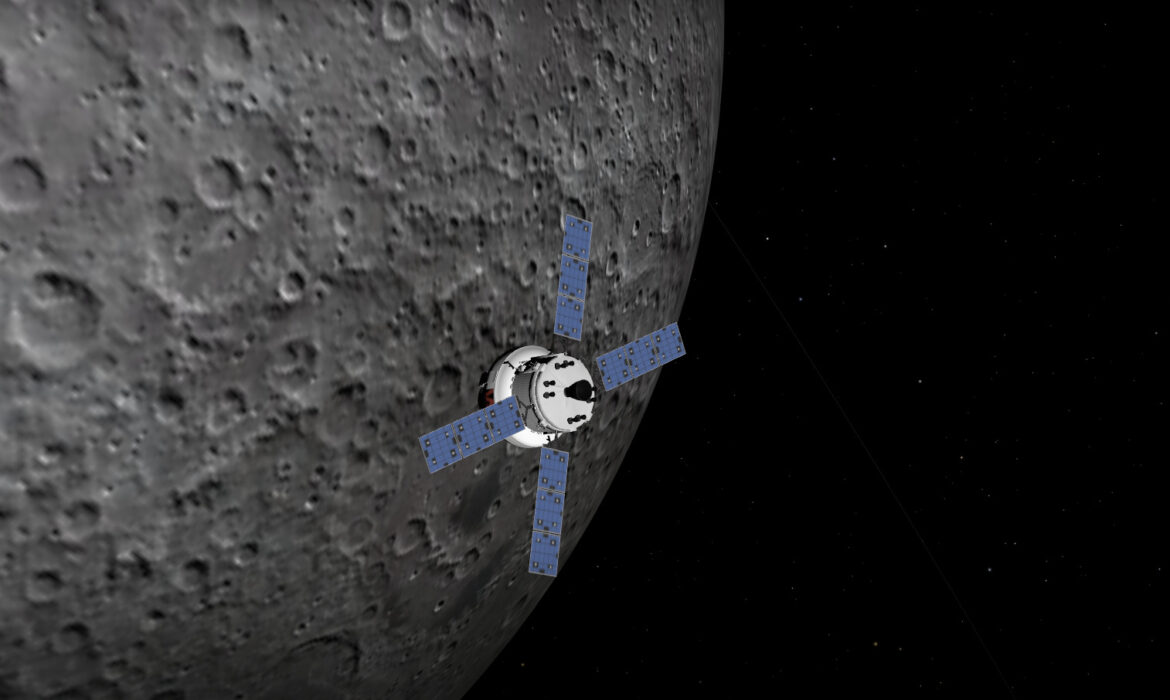On November 16, 2022, 1:47 AM (EST), the Artemis 1 spacecraft launched on the powerful SLS rocket, embarking NASA on a journey back to the Moon. How does the journey work? How will it prepare humanity back to the Moon? Let’s find out in this article.
Why Was Artemis 1 Created?
The Artemis 1 mission is the first flight in the Artemis program. Its objectives are:
- Landing humans back to the Moon after more than 50 years
- Using new technologies to explore the Moon
- Building the Gateway space station to set up a long-term presence around the Moon
- Preparing humanity to send astronauts to Mars
To achieve this purpose, the Artemis missions use the Space Launch System, the most powerful rocket in the world. It will also feature Orion, which is a specially-designed capsule to transport humans to the Moon and back. Those complicated systems and all the computer software that operates them need to work at high reliability under real-world conditions to ensure the safety of astronauts while using them. Thus, Artemis 1 was born.
Artemis 1 is a flight test for the entire Space Launch System and the Orion spacecraft, going on a trip to the Moon and back. Unlike subsequent Artemis missions, Artemis 1 carries no astronauts. This is to ensure the safety of future lunar explorers in case there are any problems with the spacecraft or the software.
What is the Journey of Artemis 1?

How does Artemis 1 reach the Moon after its launch? First, it has to enter orbit around Earth. The maneuvers start with the perigee raise maneuver, which raises the orbit’s closest point to Earth from below ground to a suitable altitude, reaching the desired orbit around our planet. While in Earth orbit, the spacecraft performs a final checkup and adjustments with its systems to ensure everything is working. If anything doesn’t, it will reenter Earth’s atmosphere using this time. But if all is well, the mission will proceed as usual.
Next, the trans-lunar injection occurs. It is a 20-minute burn that gets the spacecraft to its escape velocity from Earth. After that, the craft is in a heliocentric orbit that intersects the Moon’s path so that it reaches our satellite a few days later. It then coasts to the Moon, performing a few trajectory corrections before it arrives and conducts the orbit insertion burn.
After the orbit insertion, it goes into a retrograde orbit, which takes it 70,000 kilometers from the lunar surface. It then completes half an orbit before it starts returning to Earth. Note that the spacecraft could instead go one-and-a-half laps around the Moon, but the quicker option is chosen.
On December 11, 2022, the spacecraft will arrive at Earth, and the two components of the Orion spacecraft will separate. The service module provides air, electricity, and propulsion, while the crew module carries the crew and other necessary resources. The service module will be abandoned, and the crew module will point its heat shield toward the atmosphere. During atmospheric entry, the heat shield will heat up to over a thousand degrees while taking almost all its speed relative to Earth. When the speed is down to 300 miles per hour, the parachutes deploy, decelerating the craft to a gentle pace at splashdown.
What Are the Subsequent Artemis Missions?
If the Artemis 1 mission is successful, it will prove that all components work as expected, and the Artemis program will go on. After Artemis 1, the program will not launch a spacecraft next year. The next mission, Artemis 2, will launch in 2024. It will carry humans to the Moon this time, but they will not land on it. Instead, the mission profile will be similar to the ongoing Artemis 1 mission, serving as a flight test instead of an actual scientific mission.
If Artemis 2 is also successful, Artemis 3 will launch in 2025. This time, it will carry the first batch of humans to land on the Moon, including the first woman and the first person of color to reach our satellite. The program will then launch many more missions in the following years to set up the Gateway space station and launch waves of explorers to the Moon.
Conclusion
In this article, we have discussed what Artemis 1 is, how it works, and how it paves the way for NASA’s return to the Moon. If you want to learn more about this mission, there are a lot of online resources. Feel free to check out the webpages in the references below.
References
- Condon, S. (2022, November 17). What is Artemis? Everything you need to know about NASA’s new …. Retrieved November 17, 2022, from https://www.zdnet.com/article/what-is-artemis-everything-you-need-to-know-about-nasas-moon-mission/
- (n.d.). NASA’s Artemis Moon Missions: all you need to know. Retrieved November 17, 2022, from https://www.rmg.co.uk/stories/topics/nasa-moon-mission-artemis-program-launch-date
- Cokinos, C. (2022, September 1). Explained: How Artemis 1 will kickstart humanity’s return to the Moon. Retrieved November 17, 2022, from https://astronomy.com/news/2022/09/explained-how-artemis-1-will-kickstart-humanitys-return-to-the-moon
- (2018, February 9). Artemis I Map. Retrieved November 17, 2022, from https://www.nasa.gov/image-feature/artemis-i-map

